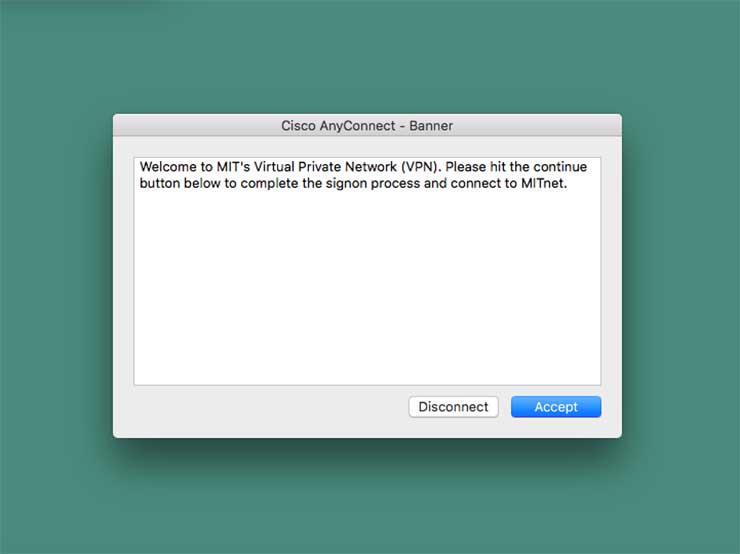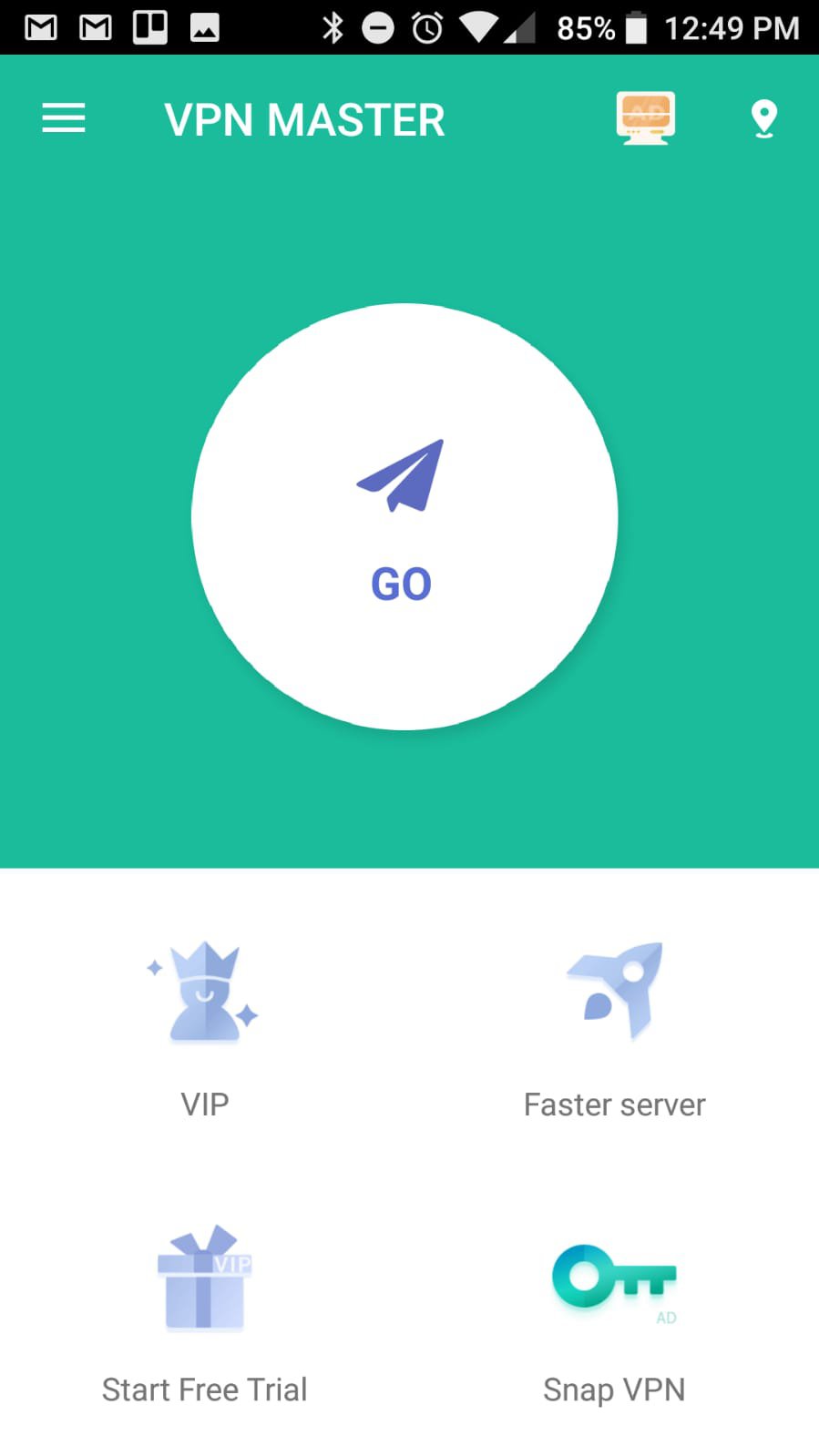- Cisco Anyconnect Wifi Signal Strength
- Cisco Anyconnect Wifi Hardware Switch Is Off
- Cisco Anyconnect Wifi Adapter
- Cisco Anyconnect Wifi Associating
Windows Vista/7/8/8.1/10 (32 or 64 bit) Anyconnect Client Installation
- Browse to NS VPN Client Download Page
- Start the 'anyconnect-win' installer downloaded in step 2.
- At each prompt, click 'Next.' You may see a 'User Account Control' dialog box asking if you would like to install the program. Click 'Yes.'
- Once the install is complete, click 'Finish.'
- Start the 'anyconnect-win-gina' installer downloaded in step 2.
- At each prompt, click 'Next.' You may see a 'User Account Control' dialog box asking if you would like to install the program. Click 'Yes.'
- Once the install is complete, click 'Finish.'
- The machine will now ask to reboot. Click yes to reboot.
- Launch the client by going to Start->All Programs->Cisco->Cisco Anyconnect Secure Mobility Client
- In the field to the left of the 'Connect' button, click on the text area and type 'vpn.ufl.edu'. Click connect.
- Authenticate with your gatorlink ID (in the form of username@ufl.edu) and your gatorlink password. Click OK.
- The most recent version of the client and vpn configuration files will be automatically downloaded. This may require another reboot to complete the update.
- Your client is now ready for use.
Notes:
We use 1E Nomad and a registry DWORD was set for Nomad which allows it to disconnect the wireless NIC when a wired connection is detected. The DWORD is located at HKLM: Software 1E NomadBranch and is called WlanBlipSecs. The value should be 0 for AnyConnect to work as intended. Check what the routes section says. (might be different depending if you are using the Cisco VPN Client or Cisco AnyConnect VPN Client) If it has. 0.0.0.0 0.0.0.0 = It means that all traffic is forwarded to the VPN while its active. Hope it could help. Improve this answer. Follow answered Mar 24 '14 at 6:16. Any connect is simply going to use whatever network connection the system already has established so you should focus on the system having a preference for which Wifi network it will connect to. View in original topic. Obtain Cisco AnyConnect VPN client log from the client computer using the Windows Event Viewer. Choose Start Run and type eventvwr.msc /s. Locate the Cisco AnyConnect VPN Client in the Applications and Services Logs (of Windows 7) and choose Save Log File As. Assign a filename, for example, AnyConnectClientLog.evt.
- Once the Anyconnect is installed on your machine, it will always be automatically upgraded to the latest version as they are published by Network Services. You shouldn't need to go through the manual installation process unless you reinstall your operating system, or your client becomes corrupted and needs to be uninstalled and reinstalled.
- After connecting for the first time, the VPN policy will be pushed to your client. The pulldown will say 'Gatorlink VPN' rather than vpn.ufl.edu after this policy is downloaded.
Introduction
This document describes the Cisco AnyConnect Mobility Client captive portal detection feature and the requirements for it to function correctly. Many wireless hotspots at hotels, restaurants, airports, and other public places use captive portals in order to block user access to the Internet. They redirect HTTP requests to their own websites that require users to enter their credentials or acknowledge terms and conditions of the hotspot host.
Prerequisites
Requirements
Cisco recommends that you have knowledge of the Cisco AnyConnect Secure Mobility Client.
Cisco Anyconnect Wifi Signal Strength
Components Used

The information in this document is based on these software versions:
- AnyConnect Version 3.1.04072
- Cisco Adaptive Security Appliance (ASA) Version 9.1.2
The information in this document was created from the devices in a specific lab environment. All of the devices used in this document started with a cleared (default) configuration. If your network is live, make sure that you understand the potential impact of any command.
Background Information
Many facilities that offer Wi-Fi and wired access, such as airports, coffee shops, and hotels, require users to pay before they obtain access, agree to abide by an acceptable use policy, or both. These facilities use a technique called captive portal in order to prevent applications from connecting until users open a browser and accept the conditions for access.
Captive Portal Remediation Requirements
Support for both captive portal detection and remediation requires one of these licenses:
- AnyConnect Premium (Secure Sockets Layer (SSL) VPN Edition)
- Cisco AnyConnect Secure Mobility
You can use a Cisco AnyConnect Secure Mobility license in order to provide support for captive portal detection and remediation in combination with either an AnyConnect Essentials or an AnyConnect Premium license.
Note: Captive portal detection and remediation is supported on the Microsoft Windows and Macintosh OS X operating systems supported by the release of AnyConnect that is in use.
Captive Portal Hotspot Detection

AnyConnect displays the Unable to contact VPN server message on the GUI if it cannot connect, regardless of the cause. The VPN server specifies the secure gateway. If Always-on is enabled and a captive portal is not present, the client continues to attempt to connect to the VPN and updates the status message accordingly.
If the Always-on VPN is enabled, the connect failure policy is closed, captive portal remediation is disabled, and AnyConnect detects the presence of a captive portal, then the AnyConnect GUI displays this message once per connection and once per reconnect:
If AnyConnect detects the presence of a captive portal and the AnyConnect configuration differs from that previously described, the AnyConnect GUI displays this message once per connection and once per reconnect:
Caution: Captive portal detection is enabled by default and is nonconfigurable. AnyConnect does not modify any browser configuration settings during captive portal detection.
Captive Portal Hotspot Remediation
Captive portal remediation is the process where you satisfy the requirements of a captive portal hotspot in order to obtain network access.
AnyConnect does not remediate the captive portal; it relies on the end user to perform the remediation.

In order to perform the captive portal remediation, the end user meets the requirements of the hotspot provider. These requirements might include payment of a fee to access the network, a signature on an acceptable use policy, both, or some other requirement that is defined by the provider.
Captive portal remediation must be explicitly allowed in an AnyConnect VPN Client profile if AnyConnect Always-on is enabled and the Connect failure policy is set to Closed. If Always-on is enabled and the Connect Failure policy is set to Open, you do not need to explicitly allow captive portal remediation in an AnyConnect VPN Client profile because the user is not restricted from network access.
False Captive Portal Detection
AnyConnect can falsely assume it is in a captive portal in these situations.
- If AnyConnect attempts to contact an ASA with a certificate that contains an incorrect server name (CN), then the AnyConnect client will think it is in a captive portal environment.
In order to prevent this issue, make sure that the ASA certificate is properly configured. The CN value in the certificate must match the name of the ASA server in the VPN client profile. - If there is another device on the network before the ASA that responds to the client's attempt to contact an ASA by blocking HTTPS access to the ASA, then the AnyConnect client will think it is in a captive portal environment. This situation can occur when a user is on an internal network and connects through a firewall in order to connect to the ASA.
If you must restrict access to the ASA from inside the corporation, configure your firewall such that HTTP and HTTPS traffic to the ASA's address does not return an HTTP status. HTTP/HTTPS access to the ASA should either be allowed or completely blocked (also known as black-holed) in order to ensure that HTTP/HTTPS requests sent to the ASA will not return an unexpected response.
Cisco Anyconnect Wifi Hardware Switch Is Off
AnyConnect Behavior
This section describes how the AnyConnect behaves.
- AnyConnect tries an HTTPS probe to the Fully Qualified Domain Name (FQDN) defined in the XML profile.
- If there is a certificate error (not trusted/wrong FQDN), then AnyConnect tries an HTTP probe to the FQDN defined in the XML profile. If there is any other response than an HTTP 302, then it considers itself to be behind a captive portal.
Captive Portal Incorrectly Detected with IKEV2
When you attempt an Internet Key Exchange Version 2 (IKEv2) connection to an ASA with SSL authentication disabled that runs the Adaptive Security Device Manager (ASDM) portal on port 443, the HTTPS probe performed for captive portal detection results in a redirect to the ASDM portal (/admin/public/index.html). Since this is not expected by the client, it looks like a captive portal redirect, and the connection attempt is prevented since it seems that captive portal remediation is required.
Workarounds
If you encounter this issue, here are some workarounds:
- Remove HTTP commands on that interface so that the ASA will not listen to HTTP connections on the interface.
- Remove the SSL trustpoint on the interface.
- Enable IKEV2 client-services.
- Enable WebVPN on the interface.
This issue is resolved by Cisco bug ID CSCud17825 in Version 3.1(3103).
Caution: The same problem exists for Cisco IOS® routers. If ip http server is enabled on Cisco IOS, which is required if the same box is used as the PKI Server, AnyConnect falsely detects captive portal. The workaround is to use ip http access-class in order to stop responses to AnyConnect HTTP requests, instead of requesting authentication.
Cisco Anyconnect Wifi Adapter
Disable the Captive Portal Feature
It is possible to disable the captive portal feature in AnyConnect client version 4.2.00096 and later (see Cisco bug ID CSCud97386). The administrator can determine if the option should be user configurable or disabled. This option is available under the Preferences (Part 1) section in the profile editor. The administrator can choose Disable Captive Portal Detection or User Controllable as shown in this profile editor snapshot:
Cisco Anyconnect Wifi Associating
If User controllable is checked, the checkbox appears on the Preferences tab of the AnyConnect Secure Mobility Client UI as shown here:
